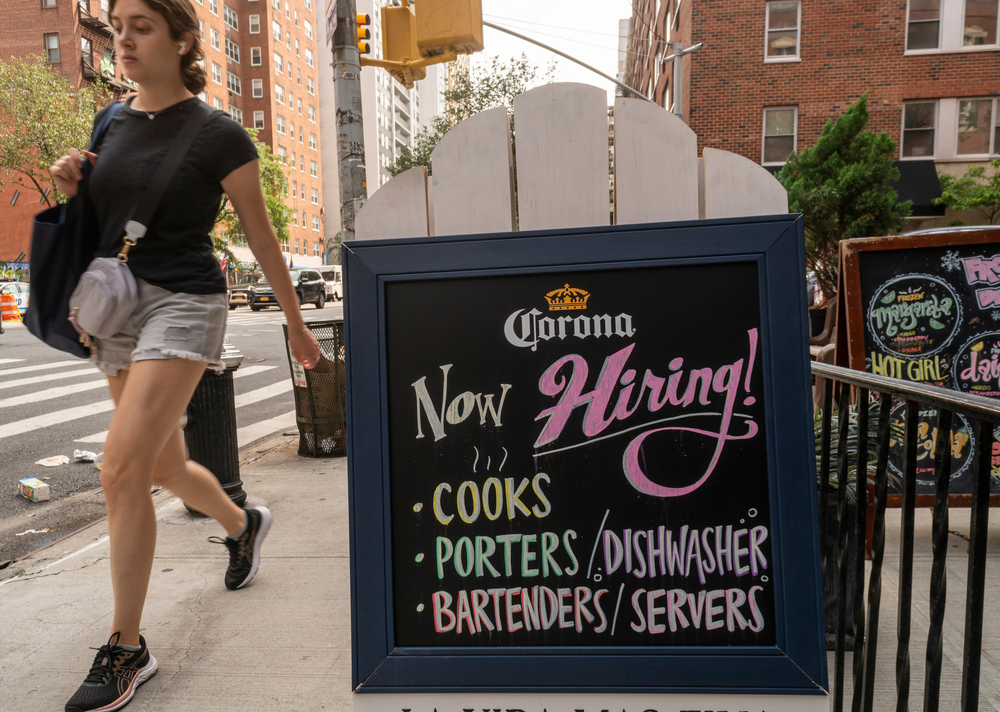It’s no secret that restaurant labor shortages will be the Achilles Heel in a post-Covid-19 world.
Artificial Intelligence (AI) technologies are now advancing at a tremendous, even scary, speed. But no business can afford to ignore its potential, particularly those, such as restaurants, that have previously relied on well-trained and highly motivated staff to attract and retain customers.
The so-called “great resignation” that accompanied the COVID-19 pandemic saw hundreds of thousands of such staff desert the hospitality industry. And with growth in popularity of home working, there seems little immediate chance of them hurrying back.
But AI is coming to the rescue by taking over many of the more mundane tasks involved in the efficient running of a restaurant. And that includes managing restaurant labor shortages.
Not only does this reduce the staff numbers required, it allows those who do remain to focus more precious time on the delivery of the top-quality customer experience that is crucial to profitability.
So here are a few examples of today’s AI in action.
Voice AI
The growth of online ordering, curbside pickup, and home delivery services has definitely helped to reduce the pressure on staffing levels that came with the pandemic.
Traditional voice ordering, with or without the use of pre-recorded menus, of course, remains important, particularly in the QSR sector.
But today’s AI-powered voice ordering now provides a much more interactive experience, which is attractive to and increasingly demanded by customers.
Siri and Alexa are now familiar to millions of users, but restaurant voice AI has already moved beyond these apps.
Today’s technology allows for the integration of words and phrases unique to the restaurant business, giving customers a much smoother ordering experience, And, of course, as a machine learning system, the quality of this experience is improving all the time.
From the point of view of your staff, this means much less time is consumed by the taking of orders and the need to intervene when the automated system fails to work. More time is thereby freed up for the creation of memorable dishes and a great atmosphere – the sort of work that employees really love to do.
And from the business owner’s point of view, the ability to reduce staffing levels and minimize the number of abandoned orders can be a significant factor in improving profitability.
Facial Recognition and Self-Service Kiosks
By now you may have become familiar with facial recognition technologies in the context of security. But they’re fast becoming a valuable restaurant technology, particularly as applied to self-service kiosks.
These kiosks are themselves a relatively recent innovation, but they’ve already become very popular with customers – a development that for obvious reasons was significantly accelerated by the COVID pandemic.
Naturally, today’s kiosks can incorporate all the AI voice applications described above. But, better still, they are able to recognize regular customers by their faces and to recall their order histories.
This in turn allows them to prompt customers, make recommendations, offer upsells, and highlight future promotions.
All of these are great benefits for businesses, And for customers, the great advantage is the speed of ordering and paying for their food. No more fretting in seemingly never-ending lunch queues!
And those concerned about security can be reassured that the technology only operates for customers who explicitly opt-in. Facial records are not stored and cannot be connected to credit cards or other sensitive personal data.
Future Planning of Staff and Orders
Kiosks equipped in this way can offer significant savings in terms of staff time and the numbers required per shift. But AI can go much further.
In an age when suitably qualified staff are ever more difficult to attract and retain, it’s essential to schedule them properly both to maintain morale and to give them a fair share of higher-tipping shifts.
Doing this rostering manually, while monitoring staff absences and prearranged shift swaps, is at best a time-consuming and tedious task. At worst, it may be almost impossible – especially in larger outlets where staff members are continually coming and going throughout the day.
The use of AI technology, however, makes the forecasting of future staff needs just a breeze. And it can allow staff to exchange their shifts with hardly any management involvement.
Perhaps best of all, when linked to a modern POS system, AI technology makes it easy to schedule the highest producing wait and bar staff to work the busiest and therefore highest tipping shifts – a win for both those team members and your business.
POS Integrated Inventory and Purchasing
Integration with POS systems also enables AI applications to monitor sales in real-time and to correlate them with menus and the quantities of recipe ingredients that are actually being used as opposed to those planned for.
The task of replenishing food stocks can therefore be automated to a high degree of accuracy. And cases of wastage by staff or even possible theft can be quickly identified and eliminated.
Apart from streamlining one of the more tedious, though unavoidable, management tasks, this reduction in waste brings with it a significant cost saving that cannot be ignored in today’s highly competitive environment.
We’re still only at the beginning of the AI revolution, but it is already offering tremendous opportunities for businesses willing to embrace them. To learn more about how restaurant technology can help improve restaurant labor shortages, check out CBS Northstar Restaurant POS.

